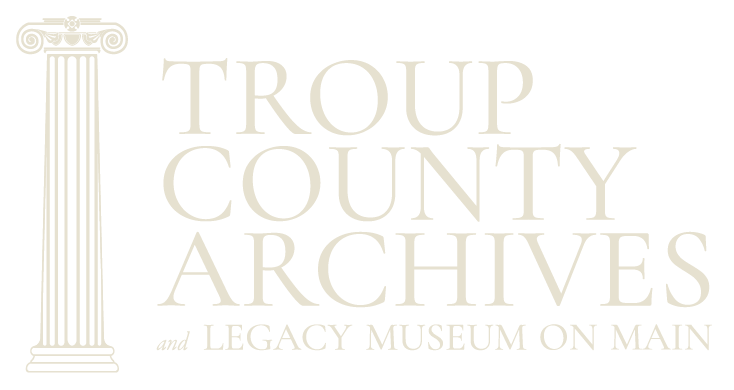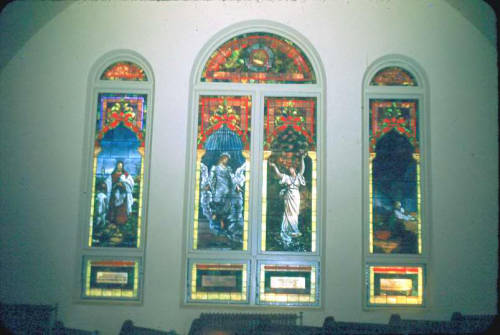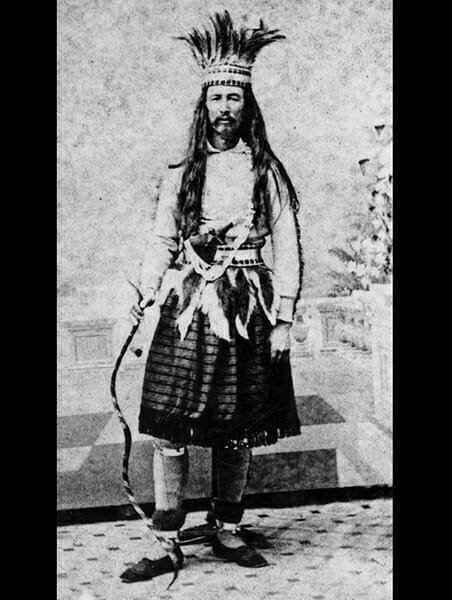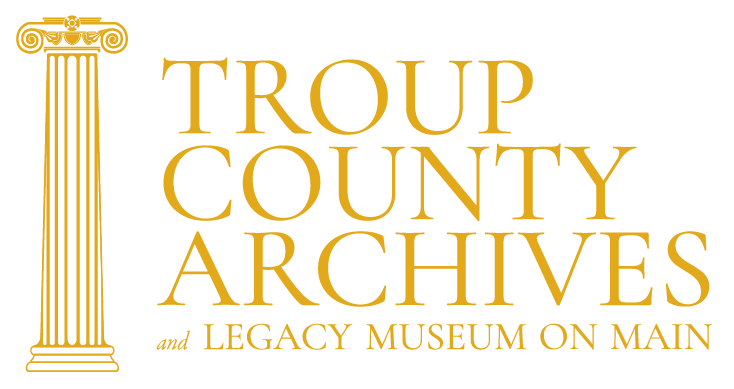If, like me, you’re a resident of LaGrange, you will regularly find yourself driving down Morgan Street where it becomes New Franklin Road and passing the glorious riot of stone monuments that makes up Hill View Cemetery. As I pass it on a nearly daily basis, I find myself thinking about the many men and women
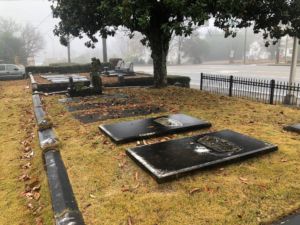
Swanson family graves
whose monuments prominently stand next to the road. This guide is created for you, dear drivers, to add a dose of local history to your daily commute.
Hill View Cemetery (the name was two words from its founding) was founded as a municipal cemetery in 1830. This cemetery is bounded by Morgan Street/New Franklin Road on the west and Bacon Street on the north, which separates it from Shadowlawn and the Hill View Annex Cemeteries which date to much later.This space has been under the administration of the City of LaGrange throughout much of its existence.
Driving north on Morgan Street, you will pass a brick pillar with the cemetery’s name on it and the Longley family lot that was discussed yesterday. The next lot over contains a large magnolia tree shading a kneeling angel. This is the grave of Sherwood Banks Swanson (1873-1882), who died at the tender age of eight.
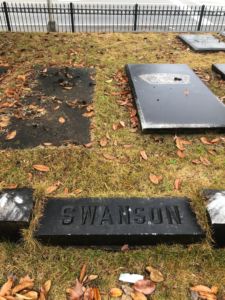
Swanson grave
It is a sad fact that infant mortality was much higher years ago and that that fact is often reflected in the makeup of our old cemeteries. Many of the family plots in Hill View contain small, unlettered or unadorned markers for infants and toddlers who may have been stillborn or only lived a short time. A prime example can be found a short distance away on the monument to the Rev. Martin B. Hardin and his wife, which bears the words, “In heaven – Five Infants” with a hand pointing upward.
The graves of older children were often marked with much fancier monuments befitting their status as beloved members of their families. This is one of those fancier graves. The grief the Swanson family experienced is palpable in the care in which the grave of their son was marked, but also in the child’s obituary in the LaGrange Reporter of September 28, 1882, just two days after young Sherwood’s death.
“The little boy…the only son of Mr. B. G. Swanson and grandson of Judge Sherwood Swanson, for whom he was named, died very suddenly on Tuesday morning last at 4 o’clock. His disease was tonsillitis, and he had been sick only since Sunday morning, and not seriously until a few hours before his death. He was a bright child—the joy, and hope of his fond parents—and to see him so suddenly blighted by the breath of the cruel destroyer is agonizing to every sympathetic nature. We have never lost a child—but we have seen our darlings when they have been given over to doctors and attendants—and we have sometimes felt that the link of sympathy was almost complete between our own heart and the bereaved. Who can tell the sorrow of surrendering a child to death? May the God of infinite compassion and tenderest sympathies have the father and the mother in His gracious keeping. The funeral services took place on Wednesday morning, at the residence, near Brownwood [the Brownwood Institute was located on Vernon Road], and the remains were interred in the cemetery.”
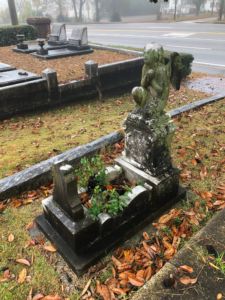
Cradle grave of Sherwood Banks Swanson
The particular type of grave the family chose is appropriately a “cradle grave,” that is a grave with a headstone and a footstone connected by a pair of low stone walls that create a planting space between them. The whole grave is now covered with moss and dirt that has darkened the white marble considerably. The headstone may have a lengthy inscription on the back, though it is obscured by moss. The planting space has a conch shell in it, something that adorns a number of graves throughout the cemetery. While the meaning of the shell has been lost, this may be a borrowed tradition from African cultures. The monument is highly carved, and the angel kneels upon a pillow with delicate tassels on the corners, all details which attest to the tremendous grief felt by young Sherwood’s family.
Sherwood’s parents, Benjamin Graves Swanson, Sr. (1850-1923) and Mattie Banks (1854-1921) are possibly buried in this cemetery, though their graves are
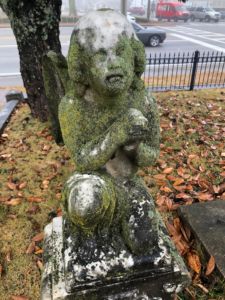
Close up of Sherwood Banks Swanson grave
unmarked. Perhaps they lie under the unmarked slabs next to their son’s grave? Two marble slabs in the same family plot mark the graves of Sherwood’s brother and his wife, Dr. Benjamin Graves Swanson (1883-1945) and Eleanor Ridley (1883-1955). – Lewis O. Powell, IV.




